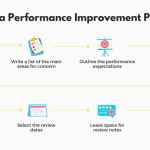Maximizing Success: Harnessing The Power Of Performance Improvement Teams For Optimal Results
Performance Improvement Teams Should Consist Of
Greetings, Readers! In today’s article, we will explore the crucial aspects of performance improvement teams and why they should consist of certain key elements. In today’s competitive business landscape, organizations strive to achieve maximum efficiency and productivity. To accomplish this, it is essential to have teams dedicated to improving performance and driving success. So, let’s delve into the key components that performance improvement teams should consist of.
What is a Performance Improvement Team?
1 Picture Gallery: Maximizing Success: Harnessing The Power Of Performance Improvement Teams For Optimal Results
🔍 Performance improvement teams are groups of individuals within an organization who are responsible for identifying and implementing strategies to enhance performance levels. These teams focus on analyzing existing processes, identifying areas for improvement, and implementing changes to drive better outcomes.
Who Should Be Part of a Performance Improvement Team?
👥 A performance improvement team should consist of individuals from diverse backgrounds and departments within the organization. This ensures a holistic approach to problem-solving and promotes collaboration. Ideally, team members should possess a combination of technical expertise, analytical skills, and strong communication abilities.
When Should Performance Improvement Teams Be Formed?
![performance improvement teams should consist of - Performance Improvement Plan Template & Guide [Free Download] - AIHR performance improvement teams should consist of - Performance Improvement Plan Template & Guide [Free Download] - AIHR](https://greenifyapk.info/wp-content/uploads/2023/09/performance-improvement-plan-template-amp-guide-free-download-aihr.png)
Image Source: aihr.com
⏰ Performance improvement teams should be formed when an organization identifies a need for enhanced performance and efficiency. This could be in response to declining productivity, customer complaints, or the need to adapt to changing market conditions. Timely formation of these teams allows organizations to address issues proactively and stay ahead of the competition.
Where Can Performance Improvement Teams Be Implemented?
🌍 Performance improvement teams can be implemented in various departments and levels within an organization. From production and operations to sales and customer service, these teams can be tailored to specific areas requiring improvement. Additionally, organizations can establish cross-functional teams to address performance challenges that span multiple departments.
Why Are Performance Improvement Teams Important?
❗ Performance improvement teams play a vital role in driving organizational success. By focusing on enhancing performance and addressing inefficiencies, these teams contribute to increased productivity, improved customer satisfaction, and higher profitability. They promote a culture of continuous improvement and help organizations adapt to changing market dynamics.
How to Form and Manage Performance Improvement Teams?
📊 To form and manage effective performance improvement teams, organizations should follow a structured approach. This includes clearly defining team objectives, selecting members with the right skill set, providing necessary resources, and establishing a supportive work environment. Regular monitoring and evaluation of performance improvement initiatives are also crucial for success.
The Advantages and Disadvantages of Performance Improvement Teams
👍👎 Like any organizational initiative, performance improvement teams have their pros and cons. Let’s explore both sides:
Advantages of Performance Improvement Teams:
1. Enhanced problem-solving capabilities through diverse perspectives.
2. Increased employee engagement and motivation.
3. Streamlined processes leading to improved efficiency.
4. Faster identification and resolution of performance issues.
5. Facilitates knowledge sharing and cross-departmental collaboration.
Disadvantages of Performance Improvement Teams:
1. Time-consuming due to the need for data collection and analysis.
2. Resistance to change from employees accustomed to existing processes.
3. Possibility of conflicts and misunderstandings within the team.
4. Resource-intensive, requiring financial investment and dedicated personnel.
5. Challenges in measuring the direct impact of team initiatives on organizational performance.
Frequently Asked Questions (FAQs)
1. Can performance improvement teams be implemented in small businesses as well?
Yes, performance improvement teams can benefit businesses of all sizes. Small businesses can also form teams to address specific performance challenges and drive growth.
2. How long does it take to see results from performance improvement teams?
The timeframe to see results from performance improvement teams may vary depending on the complexity of the issues being addressed. However, organizations should expect to see initial improvements within a few months of implementing team initiatives.
3. What happens if the performance improvement team’s recommendations do not yield the desired outcomes?
If the initial recommendations do not yield the desired outcomes, it is essential to review and reassess the team’s approach. This may involve seeking additional input, adjusting strategies, or exploring alternative solutions.
4. Can performance improvement teams be virtual or remote?
Yes, with the increasing prevalence of remote work, performance improvement teams can operate virtually. Utilizing digital collaboration tools and regular virtual meetings can ensure effective teamwork and outcomes.
5. How can organizations sustain the improvements achieved by performance improvement teams?
To sustain improvements, organizations should incorporate performance monitoring mechanisms, provide ongoing training and development to team members, and foster a culture of continuous improvement across the organization.
Conclusion
📌 In conclusion, performance improvement teams are instrumental in driving organizational success and achieving optimal performance levels. By assembling diverse and skilled individuals, organizations can effectively identify and address areas for improvement, leading to increased productivity, customer satisfaction, and overall profitability. Implementing performance improvement teams requires a structured approach and ongoing commitment from all stakeholders. So, take the first step towards enhancing your organization’s performance by forming dedicated teams focused on continuous improvement.
Thank you for reading and best of luck on your journey towards performance excellence!
Final Remarks
📝 The information provided in this article aims to guide organizations in understanding the importance of performance improvement teams. It is crucial to tailor these teams according to specific organizational needs and continuously evaluate their effectiveness. Remember, every organization is unique, and what works for one may require customization for another. Therefore, it is recommended to seek professional advice and adapt the concepts discussed here to your organization’s context. Good luck!
This post topic: Android Apps


